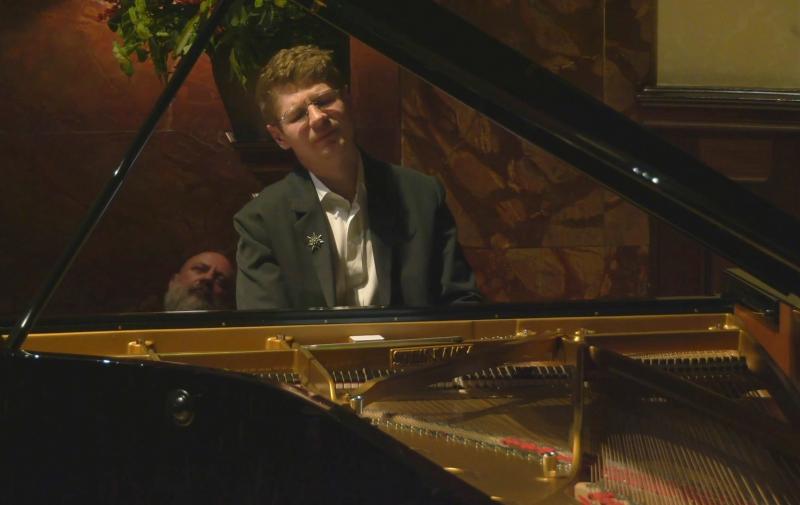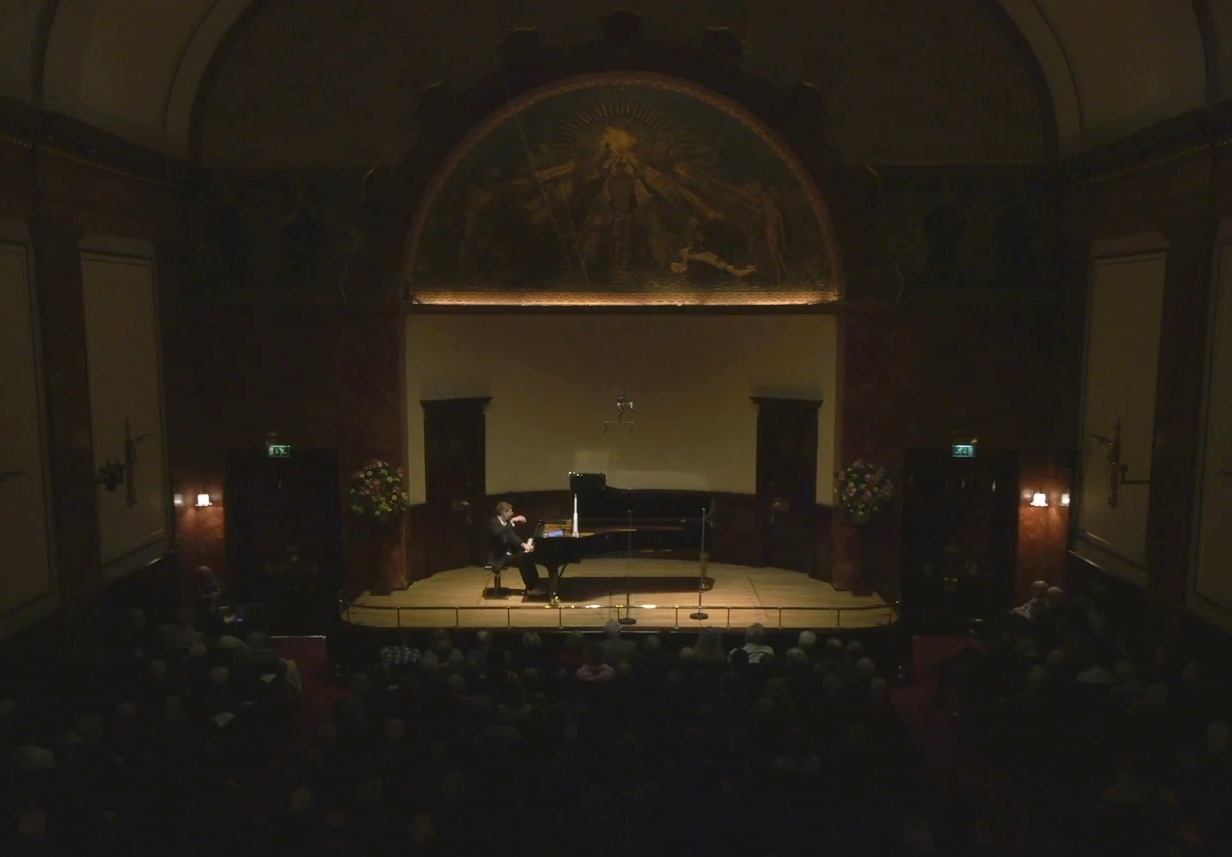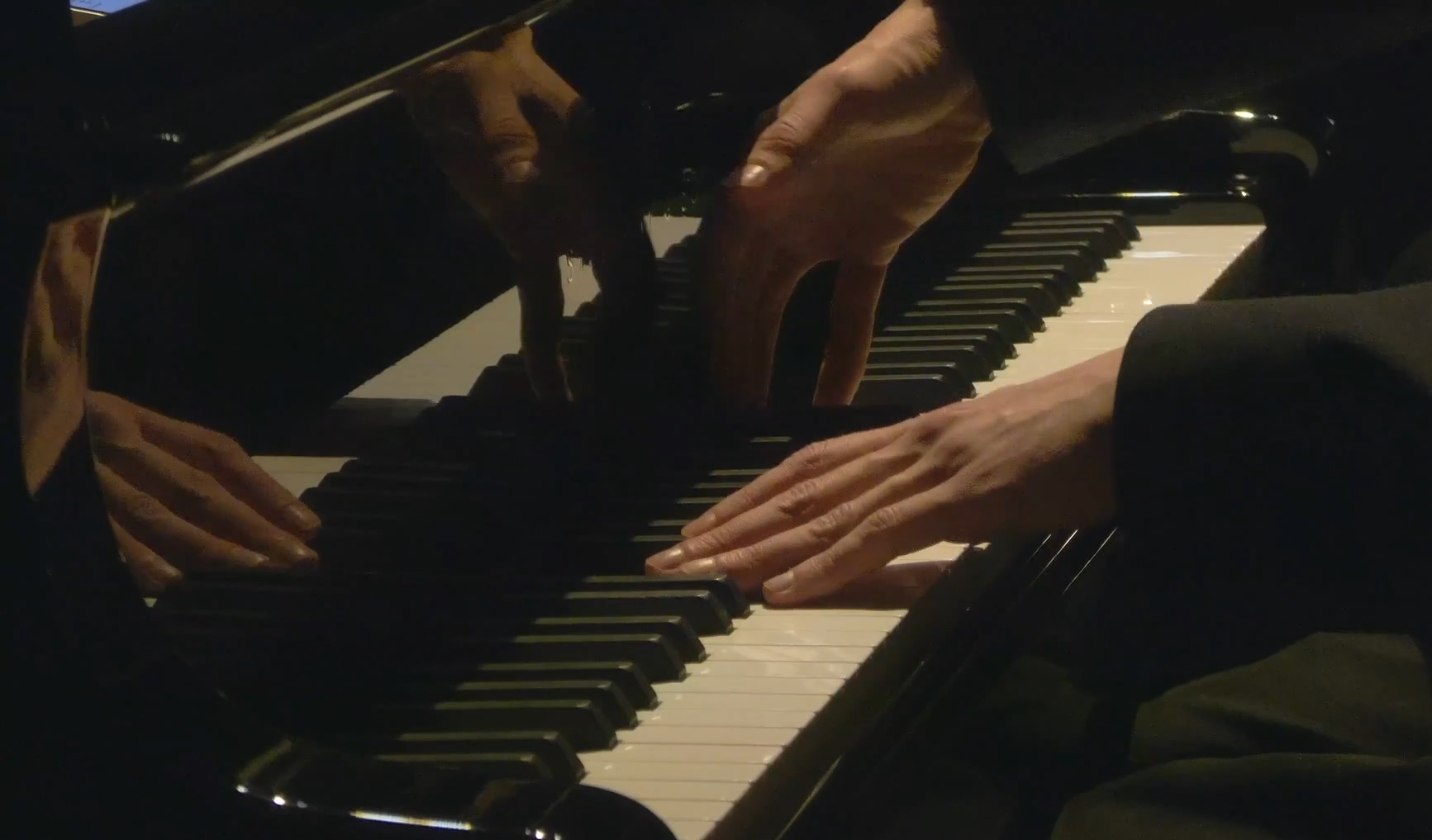Pavel Kolesnikov, Wigmore Hall review - conjuring spirits from solstitial darkness | reviews, news & interviews
Pavel Kolesnikov, Wigmore Hall review - conjuring spirits from solstitial darkness
Pavel Kolesnikov, Wigmore Hall review - conjuring spirits from solstitial darkness
Master of colour sheds special light on three masterpieces and two surprises

Quite apart from the stunning range of colours and phrasing, Pavel Kolesnikov’s recitals always give you much more than the programme promises. A golden thread through shorter pieces has been one approach, but here he did something different – sailed for the deep waters only in three chameleonic masterpieces, but suggested the connections by unveiling an unnamed work he asked us to listen to in “metaphorical darkness”.
In a short speech at the start of the second half before Kolesnikov began a tintinnabulation at extremes of the piano register with ripple effects in between, he told us how his listening “in complete and absolute darkness” made sound more tangible, musical architecture more visible, before going on to talk about that other kind of darkness – how not knowing what a piece is, “without protection of knowledge, preconception and expectation”, can be enriching. Such was his first acquaintance, as a 10-year-old, with the obsessive flow of what he found out two months later was Schumann’s Kreisleriana, the last of his three profound main choices, into which he segued from the “blindfold” work (if you watch the livestream, the game will be given away, so – spoiler alert – the choice was Adès' Darknesse Visible, a deconstruction of Dowland’s “In darknesse let me dwell”, segueing straight in to the Schumann).  It may be that we listened to that slightly different in the light, so to speak, of what he’d said. But already in a lights-dimmed Wigmore Hall the images came, to me at any rate, thick and fast in Schubert’s first (D899) set of Impromptus. That lonely voice in the opening C minor Impromptu, more of a ballade, sounded like a wan ghost summoning a phantom night army, taking on human shape by imperceptible degrees before fading to a kind of peace. To hear the set in sequence – as Samson Tsoy, Kolesnikov’s partner, also presented them when I heard him in recital for the first time in Lerici – is to realise that Schubert has crafted a sonata of sorts, with the disruption in No. 2, one of the few works to start in the major and end in the minor, healed by its famous G flat major successor. Btu in Kolesnikov’s hands, this was actually the most disturbing – hints of seismic quakes in the bass, to be extended in the opening movement of Schubert’s last sonata – brought tears and fears. In all these impromptus, night spirits light and dark were afoot in Kolesnikov’s imaginative, mesmeric conjuring.
It may be that we listened to that slightly different in the light, so to speak, of what he’d said. But already in a lights-dimmed Wigmore Hall the images came, to me at any rate, thick and fast in Schubert’s first (D899) set of Impromptus. That lonely voice in the opening C minor Impromptu, more of a ballade, sounded like a wan ghost summoning a phantom night army, taking on human shape by imperceptible degrees before fading to a kind of peace. To hear the set in sequence – as Samson Tsoy, Kolesnikov’s partner, also presented them when I heard him in recital for the first time in Lerici – is to realise that Schubert has crafted a sonata of sorts, with the disruption in No. 2, one of the few works to start in the major and end in the minor, healed by its famous G flat major successor. Btu in Kolesnikov’s hands, this was actually the most disturbing – hints of seismic quakes in the bass, to be extended in the opening movement of Schubert’s last sonata – brought tears and fears. In all these impromptus, night spirits light and dark were afoot in Kolesnikov’s imaginative, mesmeric conjuring.
It's less easy to relate Bach’s F sharp minor Toccata to programmatic hints. But Kolesnikov’s more austerely powerful tone at the start was met by the most inward of voices and a constant wondering sense of “where next?” For some reason, it’s the first time I’ve encountered the work in the concert hall, and it’s total genius from start to finish.  Kreisleriana allowed one a little more distance from the fray, despite its alternating tumults and meditations. While the Impromptus were separated by bouts of audience hacking, this was one seamless whole – unlucky some of us to be close to a massive cougher during one of the most rapt movements – and the crowning glory. I’ve always wondered exactly what aspects of Hoffmann’s Kapellmeister Kreisler Schumann intended, but you make your own stories here according to the interpretation. Kolesnikov’s protagonist was elusive, moving between disturbance, suavity and mystery but always, it seemed, in a half-darkness that connected with Schubert’s stillest night-moments.
Kreisleriana allowed one a little more distance from the fray, despite its alternating tumults and meditations. While the Impromptus were separated by bouts of audience hacking, this was one seamless whole – unlucky some of us to be close to a massive cougher during one of the most rapt movements – and the crowning glory. I’ve always wondered exactly what aspects of Hoffmann’s Kapellmeister Kreisler Schumann intended, but you make your own stories here according to the interpretation. Kolesnikov’s protagonist was elusive, moving between disturbance, suavity and mystery but always, it seemed, in a half-darkness that connected with Schubert’s stillest night-moments.
Most startling was the pulling-out of the evening’s greatest pianistic richness from the hobgoblinish outer form of the last piece. The encore took us back into complete, half-heard mystery – of all things, a Nino Rota number for a mechanical doll in his film music for Fellini’s Casanova. Hitting an Oxford Street full of late-night shoppers felt very strange indeed after that, a reminder that Kolesnikov had once again taken us into a very interior and singular world. Rather a good way to end the concert year.
rating
Explore topics
Share this article
The future of Arts Journalism
You can stop theartsdesk.com closing!
We urgently need financing to survive. Our fundraising drive has thus far raised £49,000 but we need to reach £100,000 or we will be forced to close. Please contribute here: https://gofund.me/c3f6033d
And if you can forward this information to anyone who might assist, we’d be grateful.

Subscribe to theartsdesk.com
Thank you for continuing to read our work on theartsdesk.com. For unlimited access to every article in its entirety, including our archive of more than 15,000 pieces, we're asking for £5 per month or £40 per year. We feel it's a very good deal, and hope you do too.
To take a subscription now simply click here.
And if you're looking for that extra gift for a friend or family member, why not treat them to a theartsdesk.com gift subscription?
more Classical music
 Bizet in 150th anniversary year: rich and rare French offerings from Palazzetto Bru Zane
Specialists in French romantic music unveil a treasure trove both live and on disc
Bizet in 150th anniversary year: rich and rare French offerings from Palazzetto Bru Zane
Specialists in French romantic music unveil a treasure trove both live and on disc
 Scottish Chamber Orchestra, Ibragimova, Queen’s Hall, Edinburgh review - rarities, novelties and drumrolls
A pity the SCO didn't pick a better showcase for a shining guest artist
Scottish Chamber Orchestra, Ibragimova, Queen’s Hall, Edinburgh review - rarities, novelties and drumrolls
A pity the SCO didn't pick a better showcase for a shining guest artist
 Kilsby, Parkes, Sinfonia of London, Wilson, Barbican review - string things zing and sing in expert hands
British masterpieces for strings plus other-worldly tenor and horn - and a muscular rarity
Kilsby, Parkes, Sinfonia of London, Wilson, Barbican review - string things zing and sing in expert hands
British masterpieces for strings plus other-worldly tenor and horn - and a muscular rarity
 From Historical to Hip-Hop, Classically Black Music Festival, Kings Place review - a cluster of impressive stars for the future
From quasi-Mozartian elegance to the gritty humour of a kitchen inspection
From Historical to Hip-Hop, Classically Black Music Festival, Kings Place review - a cluster of impressive stars for the future
From quasi-Mozartian elegance to the gritty humour of a kitchen inspection
 Shibe, LSO, Adès, Barbican review - gaudy and glorious new music alongside serene Sibelius
Adès’s passion makes persuasive case for the music he loves, both new and old
Shibe, LSO, Adès, Barbican review - gaudy and glorious new music alongside serene Sibelius
Adès’s passion makes persuasive case for the music he loves, both new and old
 Anja Mittermüller, Richard Fu, Wigmore Hall review - a glorious hall debut
The Austrian mezzo shines - at the age of 22
Anja Mittermüller, Richard Fu, Wigmore Hall review - a glorious hall debut
The Austrian mezzo shines - at the age of 22
 First Person: clarinettist Oliver Pashley on the new horizons of The Hermes Experiment's latest album
Compositions by members of this unusual quartet feature for the first time
First Person: clarinettist Oliver Pashley on the new horizons of The Hermes Experiment's latest album
Compositions by members of this unusual quartet feature for the first time
 Gesualdo Passione, Les Arts Florissants, Amala Dior Company, Barbican review - inspired collaboration excavates the music's humanity
At times it was like watching an anarchic religious procession
Gesualdo Passione, Les Arts Florissants, Amala Dior Company, Barbican review - inspired collaboration excavates the music's humanity
At times it was like watching an anarchic religious procession
 Classical CDs: Camels, concrete and cabaret
An influential American composer's 90th birthday box, plus British piano concertos and a father-and-son duo
Classical CDs: Camels, concrete and cabaret
An influential American composer's 90th birthday box, plus British piano concertos and a father-and-son duo
 Cockerham, Manchester Camerata, Sheen, Martin Harris Centre, Manchester review - re-enacting the dawn of modernism
Two UK premieres added to three miniatures from a seminal event of January 1914
Cockerham, Manchester Camerata, Sheen, Martin Harris Centre, Manchester review - re-enacting the dawn of modernism
Two UK premieres added to three miniatures from a seminal event of January 1914
 Kempf, Brno Philharmonic, Davies, Bridgewater Hall, Manchester review - European tradition meets American jazz
Bouncing Czechs enjoy their Gershwin and Brubeck alongside Janáček and Dvořák
Kempf, Brno Philharmonic, Davies, Bridgewater Hall, Manchester review - European tradition meets American jazz
Bouncing Czechs enjoy their Gershwin and Brubeck alongside Janáček and Dvořák
 Solomon, OAE, Butt, QEH review - daft Biblical whitewashing with great choruses
Even a top soprano and mezzo can’t make this Handel paean wholly convincing
Solomon, OAE, Butt, QEH review - daft Biblical whitewashing with great choruses
Even a top soprano and mezzo can’t make this Handel paean wholly convincing

Add comment